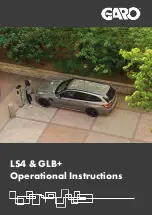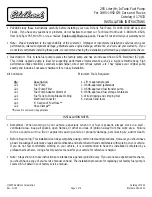
Chevrolet Corvette Owner Manual (Holden-Localizing-Australia/New Zealand-
15749882) - 2022 - CRC - 9/20/21
214
Vehicle Care
Z51 Brake Burnish Procedure for
Corrosion Cleanup
Corrosion spotting and grooving on the
brake rotor surface may appear after the
vehicle sits for an extended period of time,
especially in high humidity. This corrosion
may result in brake pulsation and noise. To
help restore optimal braking performance
and reduce noise, complete the following
procedure:
Caution
Performing the brake burnish procedure
on a base brake system can result in
brake damage.
Perform this procedure only on dry
pavement, in a safe manner, and in
compliance with all local and state
ordinances/laws regarding motor vehicle
operation.
Caution
The new vehicle running-in period should
be completed before performing the
brake burnishing procedure or damage
may occur to the powertrain/engine. See
.
Caution
Brake fade will occur during this track
burnish procedure and can cause brake
pedal travel and force to increase. This
could extend stopping distance until the
brakes are fully burnished.
Completing the following procedure as
instructed will not damage the brakes. The
brake pads may smoke and produce an
odour. The braking force and pedal travel
may increase. After the procedure, the brake
pads may appear white at the rotor contact.
Apply the brakes 10 times starting at
100 km/h (60 mph) to 50 km/h (30 mph)
while decelerating at 0.4g. This is a medium
brake application. Drive for at least 0.5 km
(0.3 mi) between applying the brakes.
If further cleanup of the brake discs is
needed, repeat this procedure with 0.7g
applications.
Brake Fluid
The brake master cylinder reservoir is filled
with GM approved DOT 4 brake fluid as
indicated on the reservoir cap. See
for the
location of the reservoir.
Checking Brake Fluid
With the vehicle in P (Park) on a level
surface, the brake fluid level should be
between the minimum and maximum marks
on the brake fluid reservoir.
There are only two reasons why the brake
fluid level in the reservoir may go down:
.
Normal brake lining wear. When new
linings are installed, the fluid level goes
back up.
.
A fluid leak in the brake hydraulic system.
Have the brake hydraulic system fixed.
With a leak, the brakes will not
work well.
















































